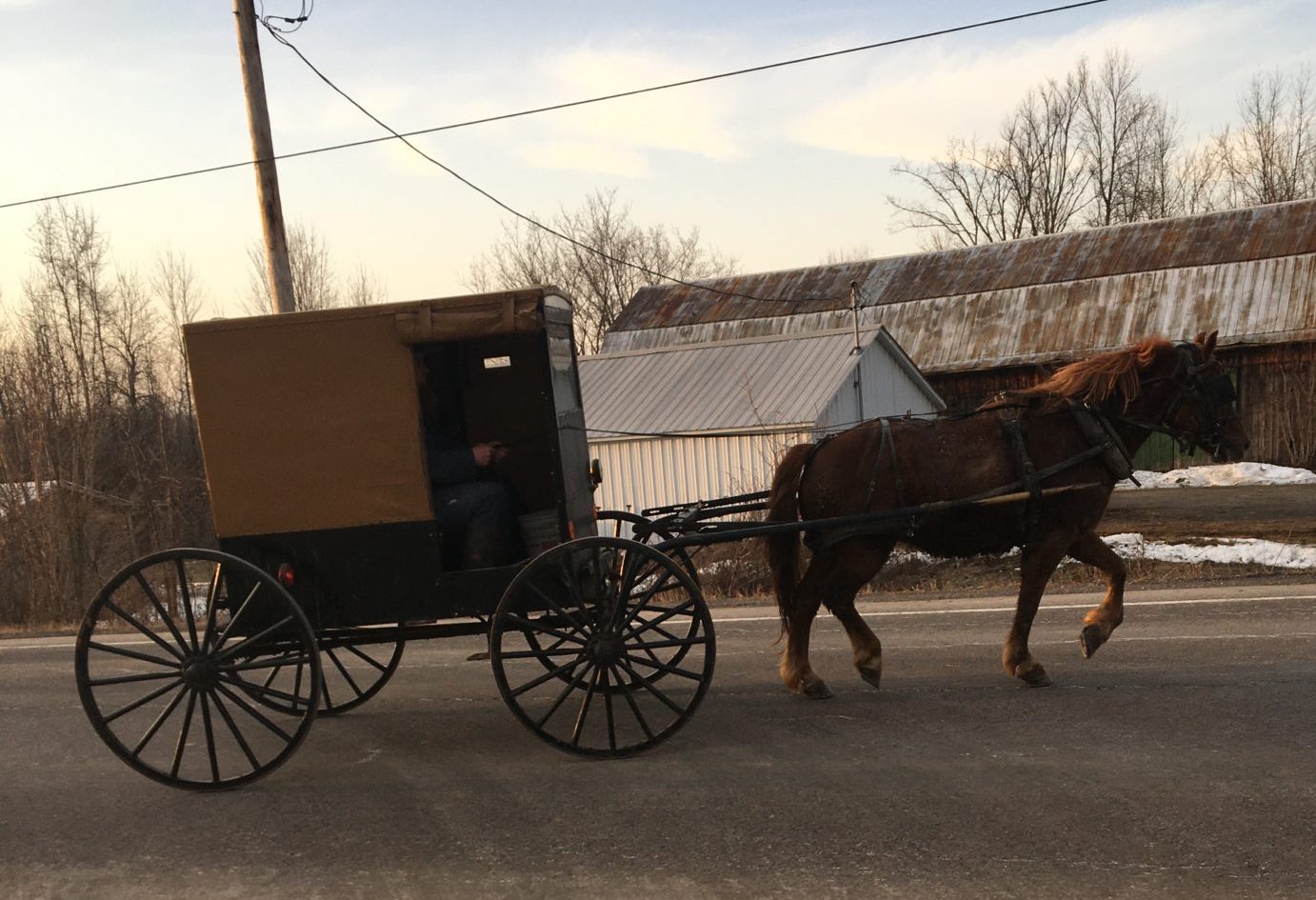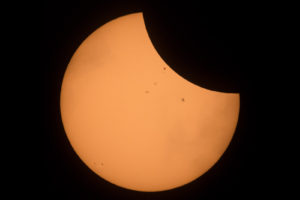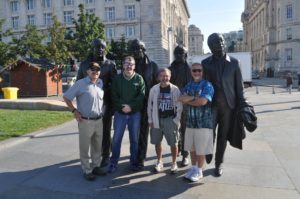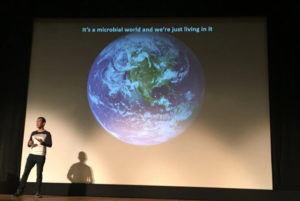The dark 12 months that for me started in an Albany class of nervous students moved toward a hopeful finale with the passing of a horse-drawn cart on a remote Upstate New York road. The clip-clop of the horse’s hooves echoes loudly off nearby trees in the otherwise desolate, soundless scene. It was finally time to take stock—to reflect on my physically draining, gut wrenching journey that began at the University at Albany March 11, 2020.
In the days, weeks, and months since then millions died. Hundreds of millions more were infected by the silent invader. Economies ground to a halt. Millions of workers lost jobs. Businesses collapsed. Hospitals, healthcare workers, and scientists caring for us and searching for vaccines and cures bent, but never broke. Grocery shelves went unstocked. Food lines, reminiscent of the Great Depression, formed. Tragedy was everywhere. Shockingly, fighting the ravenous coronavirus was enmeshed in political machinations that, in many places including our own modern country, fueled denial—leading to an ideological decision to avoid declaring the war that should have been declared. Instead, the hungry virus spread unchecked.
On this day, though, I left political ruminations aside to focus on those who died, and the families and friends wrenched apart. We have a new leader in Washington, I thought. Deaths and infections are trending down. Vaccine deployment is finally proceeding. It felt “safe” to finally step back and think.
***
Spring is breaking early on March 11, 2021. Sunshine prevails as temps rise to an expected high of 64—a rarity this early in the year in Upstate New York. I leave our home in Saratoga County and head west on the New York State Thruway (I-90). My target: Watertown. I had been there briefly years before for work. I wanted to see how the town has fared since then.
West of Albany I-90 follows the Mohawk River and Erie Canal. I see large chunks of ice freed by the sudden thaw. These mini-icebergs often get snared in bridge pillars and cause local flooding. At Utica, I depart the Thruway for the more local Route 12 northwest toward Watertown, 80 miles up the road. There is little to see along this motorway that varies from two to four lanes. The early spring scene of brown/green trees and ground is refreshing. Some snow lingers on the ground. I pass through the primary towns of Boonville and Lowville along Route 12.
Slowing to the local speed limit passing through Lowville I spot rising white tanks to my right. It’s a large Kraft Foods plant, adorned with signs for the company’s Philadelphia Cream Cheese. Opened in 1965, the plant usually employs 300 to 400 workers.
Northwest of Lowville on the final stretch to Watertown, dozens of windmills turn majestically, spurred by the stiff wind from the south that has delivered warmer weather. The motion is so mesmerizing I pull over to watch.
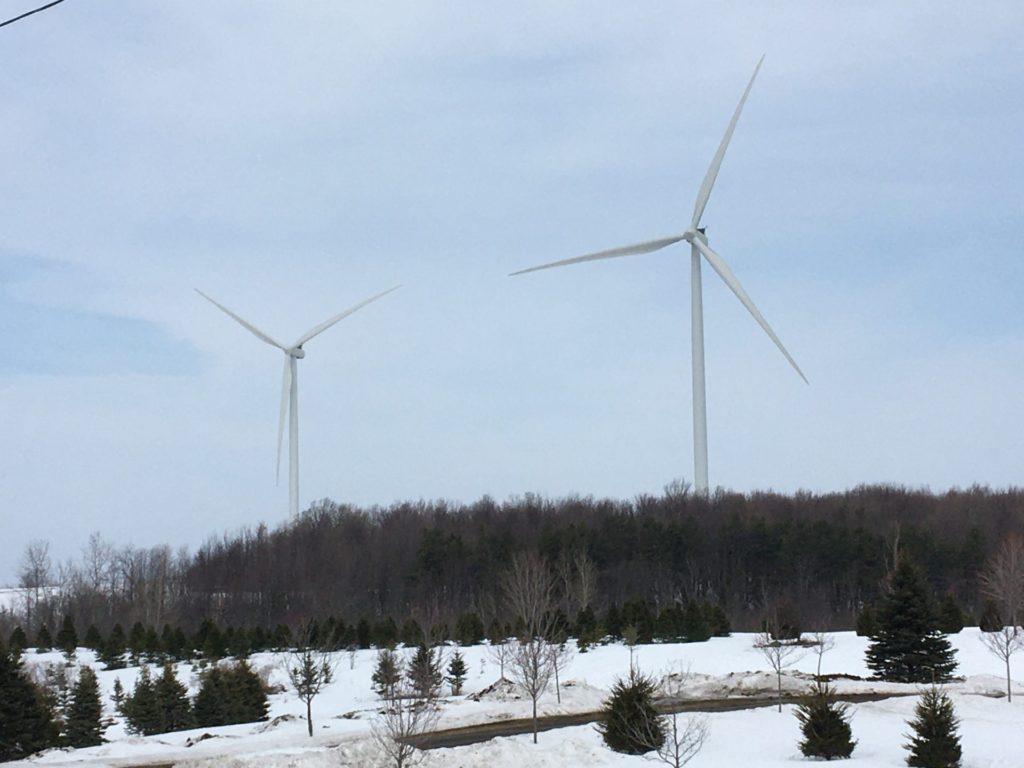
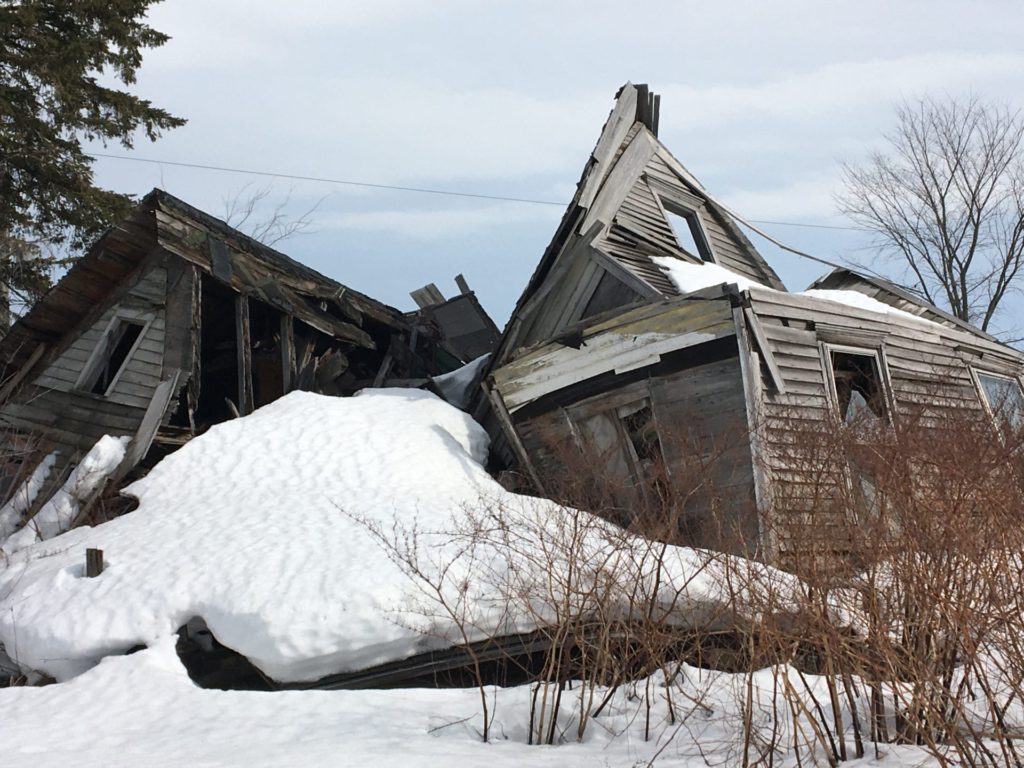
Just after noon, Route 12 delivers me into downtown Watertown. I’m not sure many restaurants will be open, so I grab a quick lunch at a McDonald’s and eat in my car. It’s my first fast food meal in over a year.
There’s plenty of parking downtown so I pull over into an angled-in parking slot. I walk west through the town square to Washington Street. I have at least one target I want to see: the local newspaper known as the Watertown Daily Times. It was the site of one of my more amusing news media visits during my years working in public relations for Verizon and its predecessor companies.
For the second time in the 1990s a major ice storm had left Watertown without power, phones, and cable TV. As the region struggled to recover, I accompanied then Bell Atlantic CEO Ivan Seidenberg on a visit with leaders of the newspaper. We talked about restoral efforts. The editors instead wanted to know why touch tone service could render older rotary phones unusable. It didn’t. They were happy about that. We were happy they were pleased with efforts to restore landline and cell service. We departed after an hour.
I snap a few pictures of the newspaper building and leave. The structure looks the same as it did on my first visit over 30 years ago.
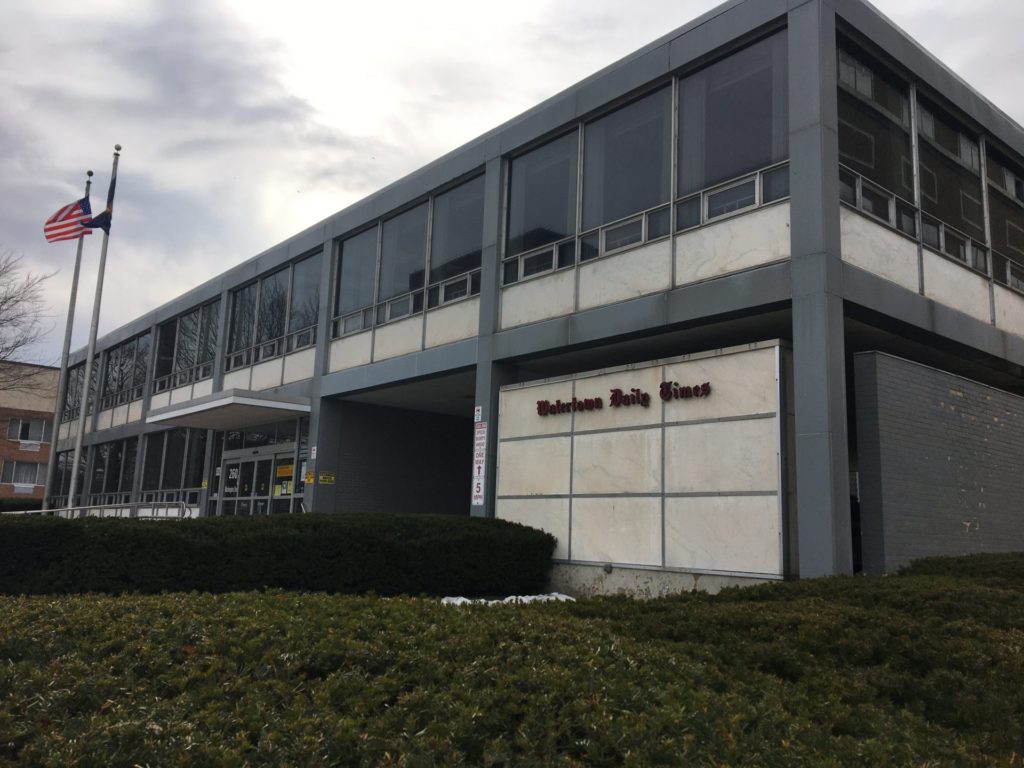
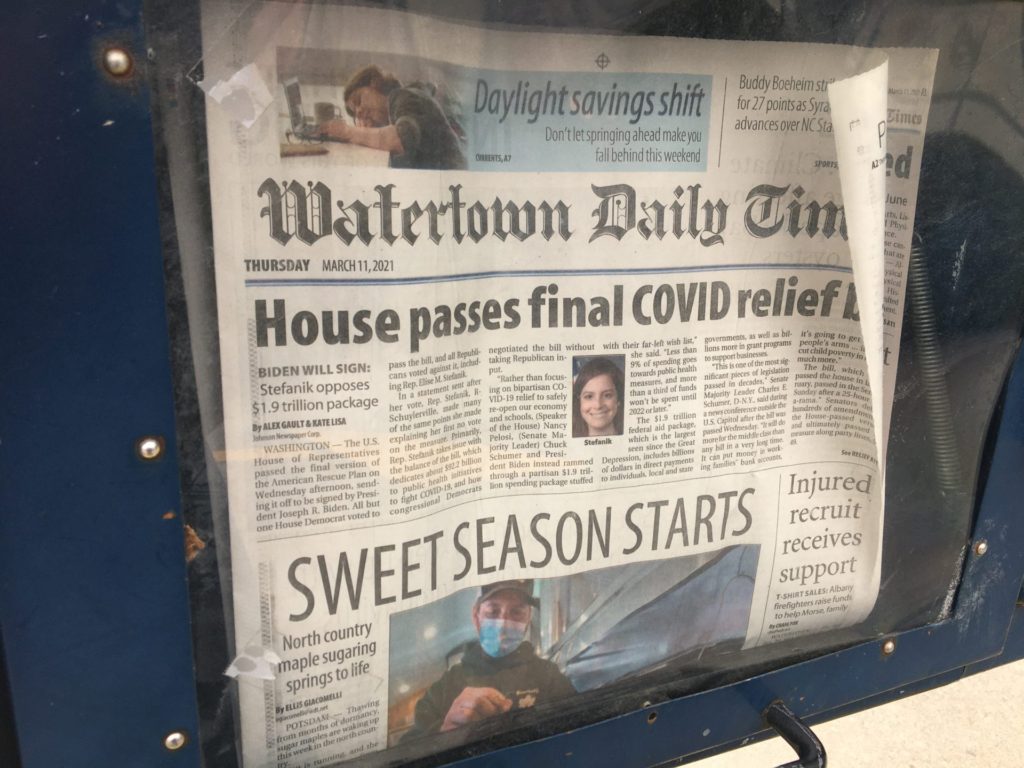
***
Resuming my walk, I spot the town’s only “skyscraper:” the eight-story Dulles State Office Building. It’s home to dozens of offices that provide services to residents to spare them the burden of dealing with a distant government bureaucracy. The state apparently didn’t invest much on the building design, though. It resembles a boring, mundanely efficient Soviet-era structure.
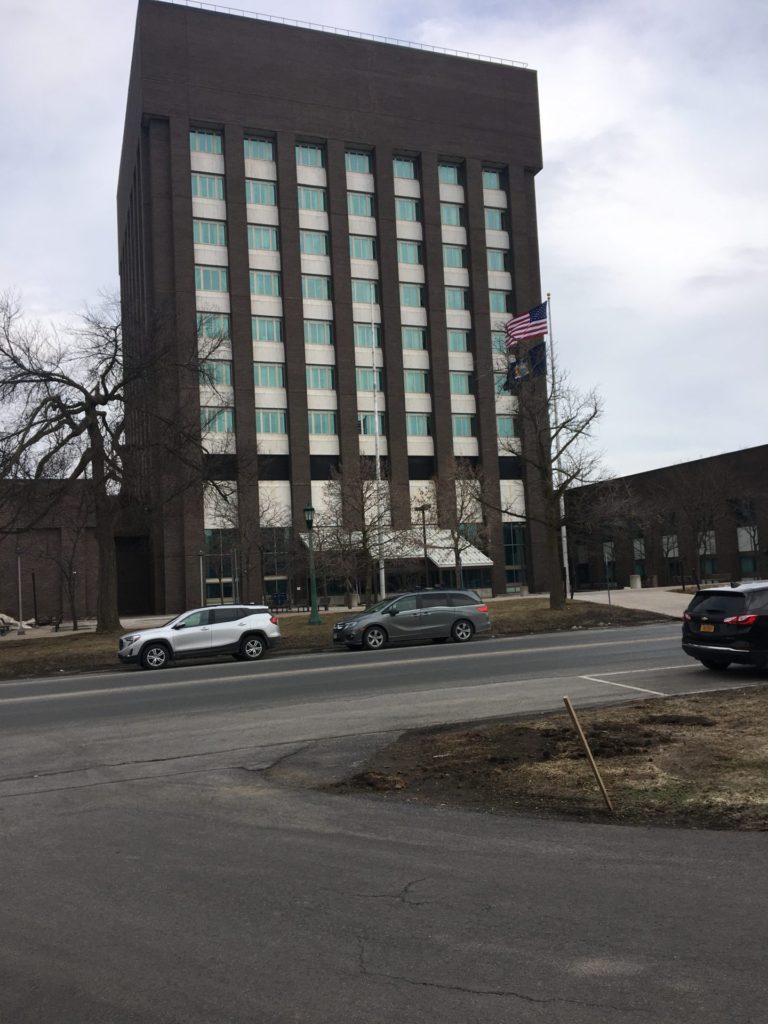
I start back to my car, walking on sidewalks lined with matted, dormant grass of a pale green/gray color. That was probably caused by the salt dumped on icy roads and feet of snow deposited by plows.
I pause as I approach my car to leave. I realize that it’s been a few hours since I thought about the pandemic. The change of scenery is working. I am in a better mood.
I depart Watertown around 2 p.m. and head north to pick up Route 11 toward the northeast and, eventually, south toward home along an interstate. Route 11 parallels the St. Lawrence River and the border with Canada to the north, and bends around the U.S. Army’s massive Fort Drum just south of the road. My goal is to make brief passes through the larger towns of Massena and Malone along or near Route 11. But I remain faithful to my usual rule on these trips: no schedule.
I make an unplanned stop in Potsdam to buy gas. Potsdam is home to engineering school Clarkson University and SUNY-Potsdam. I see some students ambling along Main Street near the Clarkson entrance, but as in most other communities, there’s little activity. This town and others are still awaiting the post-pandemic boom.
I briefly leave Route 11 to see Massena, located on the St. Lawrence. I find a small road north and take some photos of the river as the sun creeps toward the horizon. I change my route a little and take a more local road southeast toward Malone, where I’ll pick up Route 11 again.
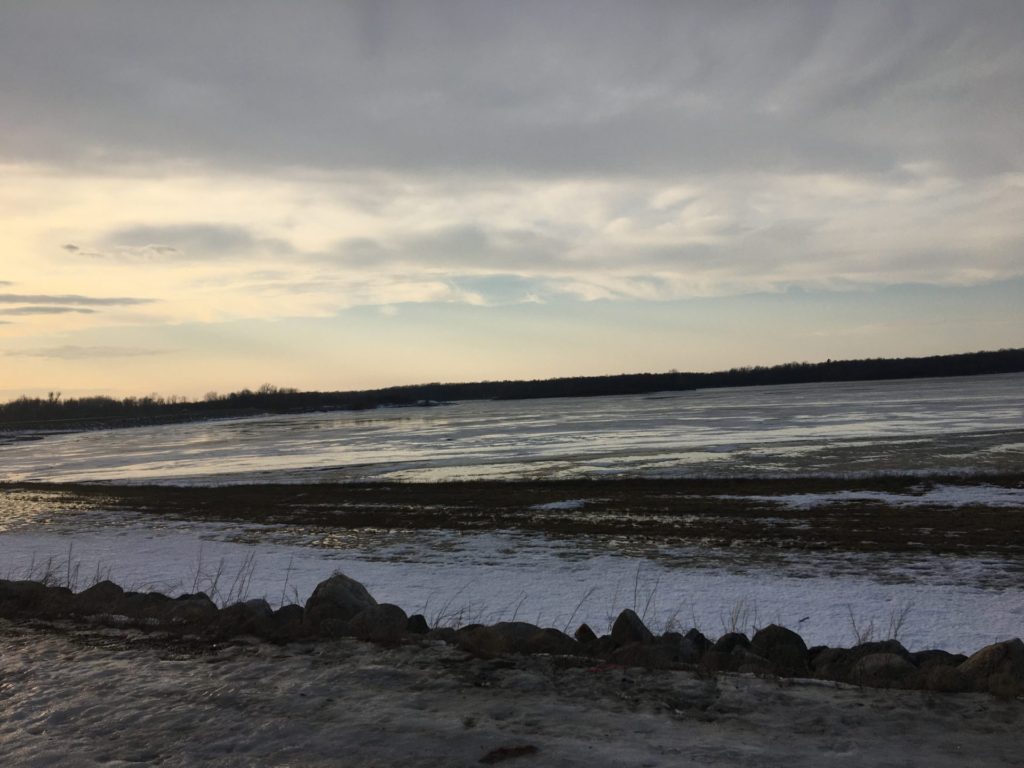
As I drive along Route 11, I’m surprised to see Amish families walking or driving horse-drawn carriages. Later, my research reveals that about 20,000 Amish residents make their home upstate, including along the St. Lawrence. I want to take a quick photo, but in a way that’s not disrespectful.
About 10 miles southeast of Massena, I find the right moment. I slowly pass a horse-drawn carriage driven by a man wearing typical Amish garb. I pass them and pull off onto a small road to wait. About five minutes later I hear the sound of the horse’s hooves grow louder. I pull out my smartphone when the driver slows down. I quickly take five pictures. He waits for a few cars driving in the opposite direction, then turns left toward the barn that was his destination. I wave. He doesn’t wave back.
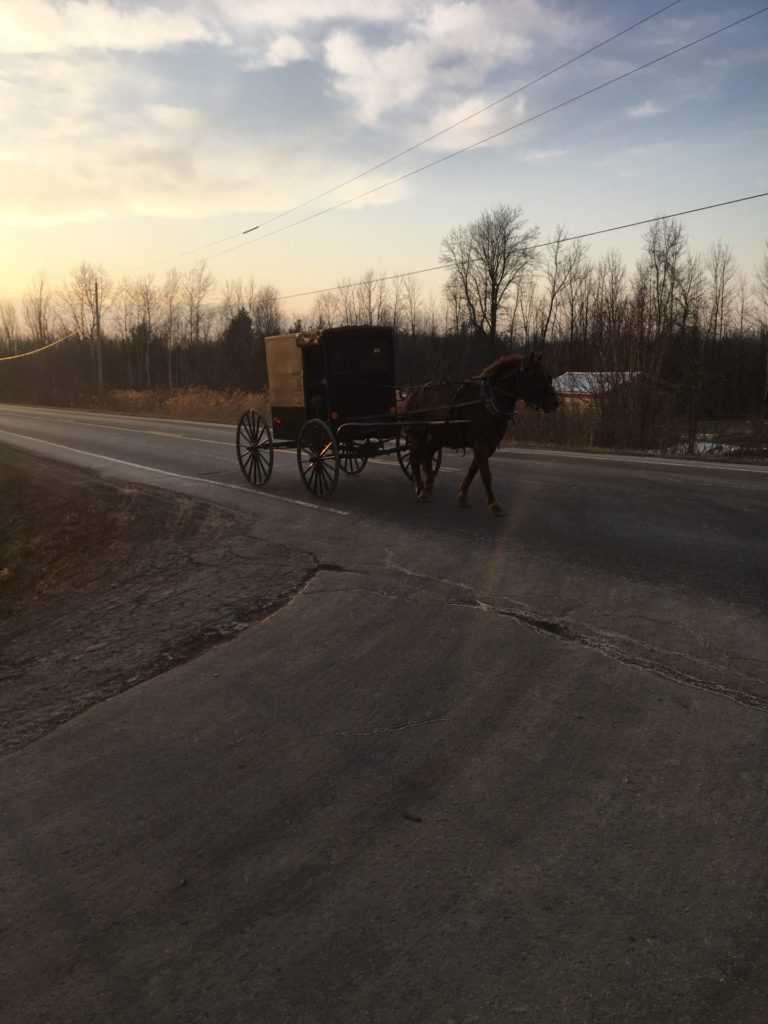
At this moment, the purpose of the trip is realized. The simple beauty of a man driving a horse-powered vehicle in the 21st century, along a quiet road where the rare car passes politely, is worth the long day and what will eventually be a 540-mile drive. The pandemic came, it stayed for a year, but this man continued his simple daily chores. I admire him. My spirit soars. I look skyward and gave silent thanks for the preservation of this simple example of daily life, of daily struggle.
I resume my drive, singing along loudly with music on my radio. I pass through Malone and follow a slow truck for some 30 miles in the dark, east along Route 11 until I meet I-87 south to take me home. Just short of the highway, I stop at a gas station to buy candy bars and use the restroom. The woman behind the counter is alone. She interrupts her mopping to take my money. “Thanks, honey,” she says, and resumes her chores. I turn for the door and leave.
***
Heading south on the final 160 miles home along a dark I-87, my mind drifts back to a few days earlier when I received my first vaccine shot. Seconds after getting it, I cried. For the half million who died. For the miracle of scientists and healthcare workers. For pure joy. On the drive home from the clinic that day one of my favorite songs, Petula Clark’s Downtown, pours from my car speakers. It’s a song that first lifted my heart in the winter of 1964 during a grueling family road trip from Wyoming to Massachusetts. The lyrics still brighten my mood over a half century later.
“…. So maybe I’ll see you there
We can forget all our troubles, forget all our cares
So go downtown …”
That’s where I’m headed next—downtown to New York City and Boston. It’s been too long.

